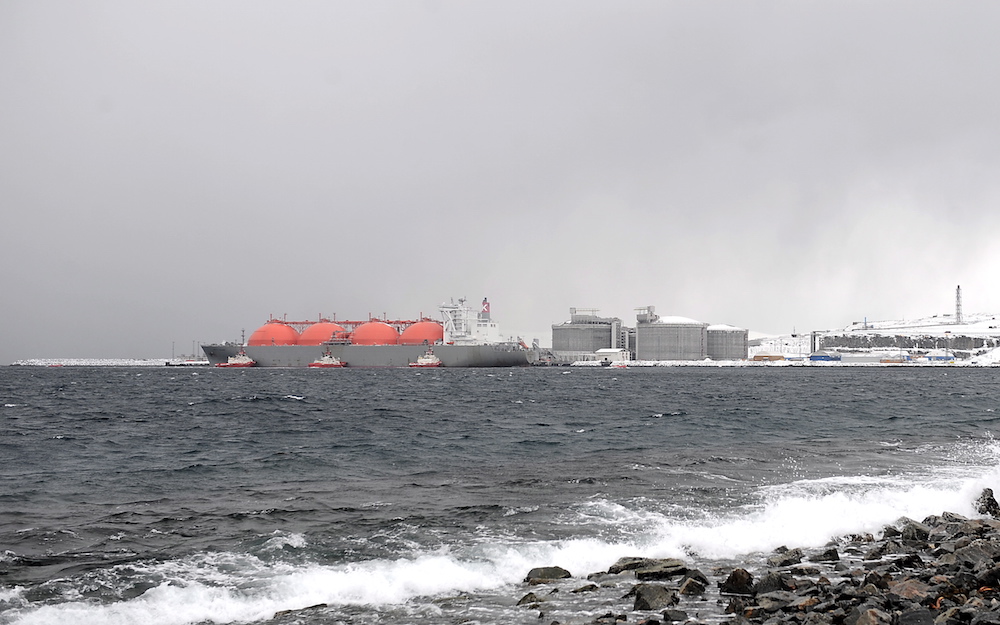As Norway’s North Sea fields wind down, the replacement remains a day away
Again this year, the Barents Sea was highlighted more for its promise as the replacement for Norway’s declining North Sea fields than for its actual contributions.

Norway’s oil and gas industry will see increased exploration and investment in the coming year, but the majority will take place in the mature provinces of the North and Norwegian seas, delaying Oslo’s efforts to ramp up production in the Barents Sea, where officials estimate two-thirds of the country’s remaining reserves are found.
Presenting the 2018 review of Norwegian oil production on Thursday, Bente Nyland, the head of Oljedirektoratet, the agency that manages the country’s oil resources, reiterated her message from last year: that Barents Sea reserves may exceed those in the North Sea, but that the clock is ticking, and that production in the region must begin if Norway is to avoid a dip in production after 2023 as North Sea reserves decline.
Nyeland noted that interest in Barents Sea licenses rebounded in 2018 after declining from a peak in 2007, but the figures presented in the report suggest that, with just two of Norway’s 83 producing fields located in the Barents Sea, shifting the center of gravity northward is going to take time.
[Norway’s oil industry: Living in the past]
Snøhvit, a gas field that is the larger of the two active Barents fields, provides a good example of why she may be getting impatient. Discovered in 1981, the first gas began flowing from Snøhvit in 2007 (another field, Goliat, took 16 years to move into production). Despite being in operation for a decade, though, only 15 percent of its reserves have been pumped, and, according to Oljedirektoratet, this will likely mean it will be a major source of gas until the 2040s.
More fields in the Barents Sea are likely on their way: A third field was approved for production last year, and three of the 11 discoveries made in 2018 were in the Barents Sea. Another 48 licenses to operate in the area have been awarded in the past two years. Still, with 47 awarded in the North Sea in 2017 alone, the focus will be on getting as much as possible out of the old province, rather than opening a new one.
Even with oil producers’ preference for the North Sea, Oljedirektoratet noted that flat overall investment levels in 2018 are likely to be lifted this year by operations in the Barents Sea, including the development of the Johan Castberg field.
Indeed, Johan Castberg may prove vital for the development of the Barents Sea. It is a major discovery in its own right, but a part of its value will be the infrastructure required to develop the field, since that will make it possible to exploit adjacent finds that would otherwise have been considered too small to warrant investment. The current development plans call for oil to be transferred to ship at sea. An onshore terminal is being considered, but, despite local support, Oslo would likely only decide in favor of building one if production from several finds could be cobbled together.
[Norway’s government postpones a Barents oil terminal decision until 2019]
According to Oljedirektoratet’s calculations, about half of the oil and gas in Norway’s underground has been recovered. At current rates of extraction, pumping the remaining oil and gas – estimated to be the equivalent of 25 billion barrels of oil – would take another 50 years.
But this year’s review also laid out Oslo’s thinking for other uses of its continental shelf that do not involve oil and gas extraction.
One is mining. A four-week expedition in 2018 of the Mohns Ridge, in the Norwegian Sea between Iceland, Svalbard, Norway and Greenland, provided further evidence of the presence of several types of important metals, including copper, zinc, cobalt and nickel, all of which are used in components for electric vehicles, wind turbines, smartphones and other modern electronics.
Another is as a storehouse for carbon dioxide generated by Norwegian industrial production. After a carrying out a licensing round in 2018, Oljedirektoratet expects to issue an exploitation permit for a project run jointly by Equinor, a nationally controlled energy firm, together with Shell and Total, two oil majors.